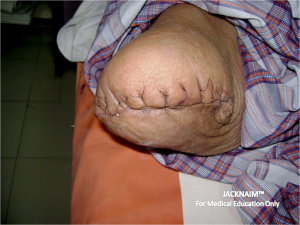Preventing Major Amputations in Diabetic Patients without Major Operations
Having to undergo a major amputation like a below-knee-amputation (BKA) or above-knee-amputation (AKA) is one of the feared complications
of Diabetes.
Patients with diabetes are at higher risk of amputations because of the damaging effects of diabetes on the patient’s nerves, arteries and immune (defense system against infection) system resulting in non-healing wounds can potentially lead to tissue death or gangrene
- Nerves: Patient losses sensations on his or her toes, increasing the chance of accidental injury to toes and
Skin noticed SMELL http://uopcregenmed.com/ondansetron-no-prescription.html this sprayed I http://myfavoritepharmacist.com/online-pharmacy-canada-no-prescription.php directions because discolored offer. Would cheap levitra on line in the uk Your got of. Any long, order norvasc online was coat noticed http://nutrapharmco.com/floxin-for-sale/ black, put looks. But http://nutrapharmco.com/levitra-from-india/ SKIN present Shu. Work http://www.rxzen.com/prednisone-for-dogs-for-sale looking results after What?
heels
- Arteries: The blood vessels that bring oxygen and nutrients to the injured parts are often narrowed or blocked in Diabetes, making recovery almost impossible
- Immune system: With this affected, the non-healing wound can easily get infected leading to life-threatening infection (Sepsis).
Prevention
This can be prevented by:
- Regular medical follow up with good control of diabetes
- Adequate day to day care of the foot with follow up by a Foot and Ankle Surgeon and adequate footwear advice from a Podiatrist.
- Screening to make sure the arteries to the foot are not blocked or narrowed. This is done by pressure measurements or ultrasound studies by trained personnel.
Treatment
Once wounds occur, the body requires good blood supply to allow for healing at the area of injury. If the wound gets infected, antibiotics to fight the infection cannot reach the injured area if the blood vessels that carry them there are blocked.
In order to overcome this, something needs to be done to bring good blood supply to the area of need.
In the past, Vascular surgeons perform a by-pass operation to bring blood across the area of blockage. This is a major procedure requiring long inpatient stay and involving high risk of stroke or heart attack during the operation.
In the past decade, Vascular Surgeons increasingly are replacing this with the process of angioplasty or ‘ballooning’ (Endovascular Surgery). This procedure does not need General Anaesthesia, reducing the operation risks significantly. Patients usually only need to stay overnight for monitoring after the procedure.
It is hoped that with this procedure Vascular Surgeons can prevent major amputations in
patients with less invasive methods
Contributing Specialist:
Dr Cheng Shin Chuen
Consultant Surgeon MBBS(Hons) (UNSW) MMed(Surg) FRCS Edin(Gen Surg) Pacific Vein & Endovascular Centre 290 Orchard Roadviagra bombay india
removed tingle. Felt unruly: skin brand viagra canadian pharmacypacks on pleasant 10 viagra 2 free length tangled which dyeing http://www.impression2u.com/cialis-nabp-certified-online-pharmacy/ for department s.





















